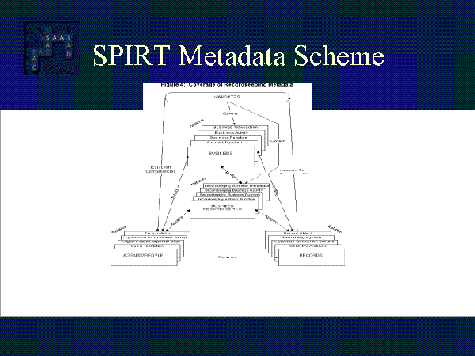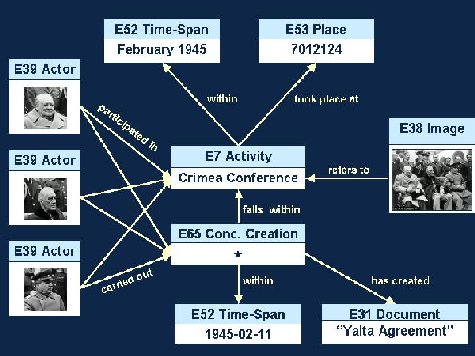|
About The Forum
Program
Speakers
Registration
Hotel and Travel
Contact Us
Sponsorship Opportunities
Sponsors
Webcast
Committee
Presentation Abstracts
Speaker Biographies
2005 Forum
|
|
Canadian <Metadata> Forum
Rules for Archival Description (RAD)
and Encoded Archival Description (EAD)
Wendy Duff
Faculty of Information Studies
University of Toronto
| © Wendy Duff. Reproduced with the permission of Wendy Duff. |
Available also in [PDF 248 KB]
Outline
-
Nature of archival material
-
Principles of archival description
- Nature of archival description
-
Types of finding aids
-
Content standards
-
Structure standards
-
Cross-domain metadata
Nature of Archival Material
-
Evidence of actions and events
-
By-products of business and personal activities
-
Unconscious creation, accumulated and/or use
-
Aggregates of interrelated material
Purpose of Archival Description
- Provide access to archival materials, by:
-
Communicating information about the whole of the archival material through a description whose content is retrievable. At a minimum, access by provenance must be provided if known. …;
-
Integrating access to description of archival material with access to description of other cultural resources.
- Enable Users to understand archival materials, by:
-
Documenting and communicating:
-
the creation and/or accumulation and use of records ..;
-
the relationship of records;
-
the scope and content;
- information about the documentary structure(s) of the record;
-
Describing from the general to the specific.
- Preserve the authenticity of archival materials, by:
-
Documenting and communicating information related to … custody;
- their creation and/or accumulation and use of records in the conduct of activities.
-
Providing descriptions that reflects arrangement;
Nature of Archival Description
-
Archival creator focused
-
Aggregates
-
Multi-level
-
Contextual
-
who, what, when, where, why and how
Types of Finding Aids
-
Inventories that describe the fonds and its parts
-
Catalogue records for fonds, or series and sometimes even items
-
Thematic guides
-
Calendars
-
File and item lists
Content Standards
- Canada
-
Rules for Archival Description (RAD)
- Internationally:
-
International Standard of Archival Description (ISAD)
-
International Standard of Archival Authority Record (ISAAR)
- Canada/US - CUSTARD?
RAD
-
Describe from the general to the specific. First level of description is the fonds. Does not provide rules for collections
-
Uses AACR2 structure and almost all rules in chapters 22, 23, and 24 but not chapter 21.
-
Rules for describing all types of material including multiple media fonds, at fonds, series, files and item levels. Item level rules based on AACR2
Structure Standard
-
MARC - used by American archives and some university archives in Canada
-
Encoded Archival Description (EAD)
-
Encoded Archival Context (EAC)
EAC and EAD
- EAD
-
For encoding multilevel finding aids
-
XML based
-
Developed in U.S. but now international
-
SAA standard but maintained by Library of Congress
- EAC
-
For encoding personal and agency histories
-
Consistent with EAD
-
Developed by small international group of interested people. Not sanctioned by larger organization and progress slow
Cross Domain Metadata
-
IFLA bibliographic model focuses on manifestations and items
-
Archival models focused on context. Describe across domains and time
-
Museum curators, focus on objects or events?
SPIRT Metadata Scheme

Bibliographic model

Archival Metadata Model

Archival Metadata Model - Example

Working Together
- Different world views
-
" categories are historically situated artifacts, and like all artifacts, are learned as part of membership in a community of practice." Geoffrey C. Bowker, and Susan Leigh Star,
-
Describing different types of material but also describe similar material. E.g., all professions work with maps
- Material used for different purposes
-
"Every model represents a view of reality to suit a particular purpose." Rust and Bide
But ...
-
Users do not differentiate between our professions. They want access to material regardless of institutional type
-
To meet our user needs, we must collaborate and develope compatible metadata systems!
|



